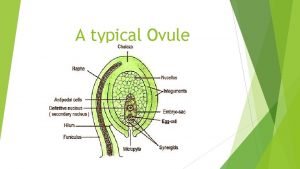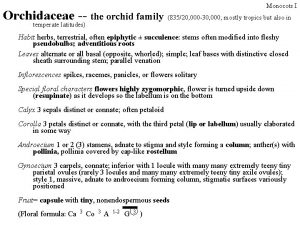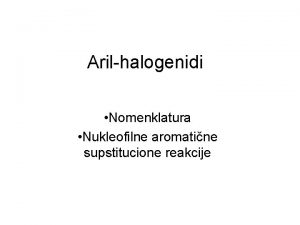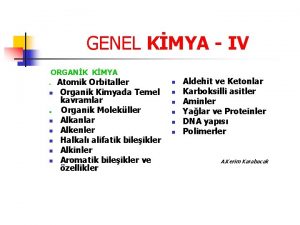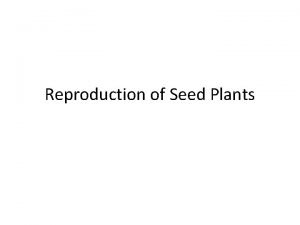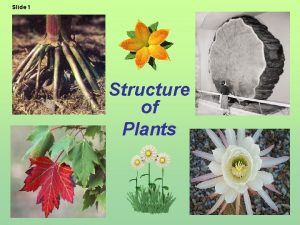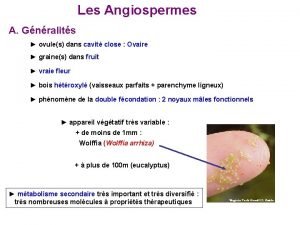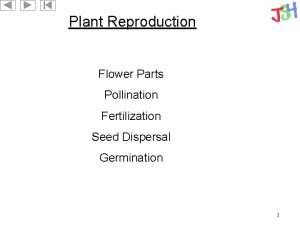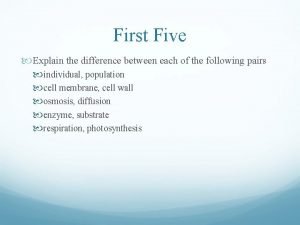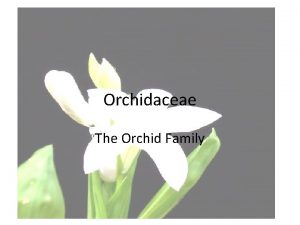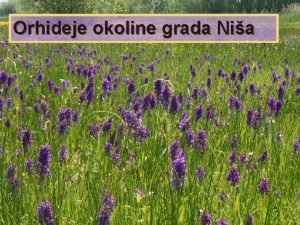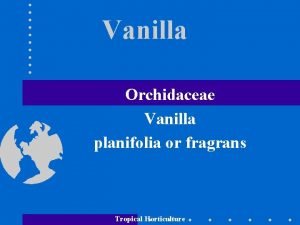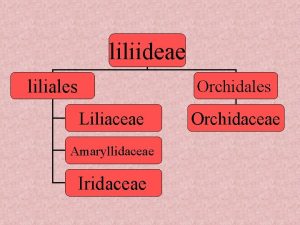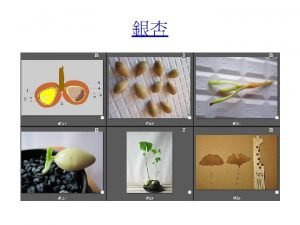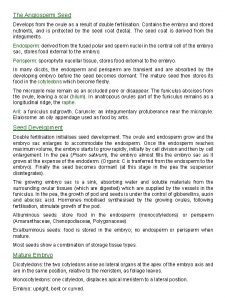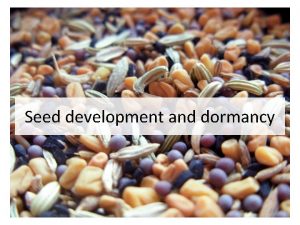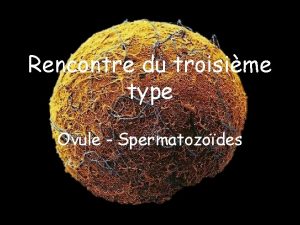A typical Ovule Ategmic Ovule in Orchidaceae Aril


















- Slides: 18

A typical Ovule

Ategmic Ovule in Orchidaceae

Aril and Caruncle

Types of Ovule

Tenuinucellate vs Crassinucellate Ovule

Megasporogenesis

Callose during megasporogenesis

Endothelium in Lotus

Endothelium or Integumentary Tapetum Commonly found in sympetalous plants with unitegmic and tenuinucellate ovules, the integumentary tapetum exhibits great diversity in its distribution, morphology, cytology, differentiation, and behaviour. It is separated from the nucellus and embryo sac by layers of cuticle. The thickness, uniformity and continuity of cuticle is variable not only in diverse taxa but also at different places in the same species. The cuticular layers manifest interruptions, and the embryo sac wall bears certain ingrowths in the regions of these discontinuities. Ultrastructurally, the endothelial cells show characteristics of meristematic as well as secretory cells. Sometimes they develop wall projections and even contain multivesicular bodies. Large quantities of proteins, carbohydrates, ascorbic acid and some enzymes such as oxidative enzymes, amylases, proteases are also known to occur. Besides, a deposition of callose at the onset of pollination is recorded in Petunia. Proliferation of the integumentary tapetum in some hybrids results in seed abortion. It is believed that endothelium helps in coordinating growth in the ovule, channelizes nutrition to the embryo sac, and later performs the protective function.

Hypostase

Hypostase is one of the unusual features present at the chalazal region of the embryo sac and situated immediately below it. It represents an irregularly outlined group of nucellar cells which are poor in cytoplasmic contents but have their walls partially lignified or suberized. The name Hypostase to this group of unusual cells was first given by Van Tieghem. According to him the hypostase forms a barrier or boundary to prevent the further growth of the embryo sac. Even though hypostase is limited to basal region of the embryo sac occasionally they may cover the embryo sac extending up to the micropylar half. Hypostase has been reported from a number of families Amaryllidaceae, Villiaceae, Zingiberaceae, Euphorbiaceae, Crossomataceae, Theaceae and Umbelliferae. At the stage of the organized embryo sac the cluster of hypostase cells appear like a beard at the chalazal region of the embryo sac.

Hypostase Functions I. It prevents excessive growth of the embryo sac of the chalazal region acting as a barrier. II. It plays a role in the water balance of the resting seed. III. It serves as a link between the vasculature of the funiclus and the embryo sac facilitating the rapid of nutrients. IV. It may acts as secondary storage tissue. V. It produces certain enzymes or hormones and has a role to play in the protection of the seed.

Aril – Nutmeg and mace

Aril in Lychee

Aril in Pomegranate

Aril An aril is a specialized outgrowth from a seed that partly or completely covers the seed. . The term "aril" is sometimes applied to any fleshy appendage of the seed in flowering plants, such as the mace of the nutmeg seed. Aril is the third integument of the ovule In Pomegranate each seed is surrounded by a red, juicy and sweet seed covering known as an aril. The seeds and arils are the edible parts of the fruit — eaten either raw or processed into pomegranate juice — but the peel is discarded. The fleshy , sweet and edible portion of Lychee is aril

Caruncle

Caruncle The caruncle is the spongy outgrowth of the integument near micropyle. The main function of caruncle is to absorb water which is necessary for germination. The example of seed which contains caruncle is castor seeds
 Ategmic ovule shows
Ategmic ovule shows Orchidaceae floral formula
Orchidaceae floral formula Amina primer
Amina primer Aril keton
Aril keton Nh2 adalah
Nh2 adalah Aril halogenid
Aril halogenid Site:slidetodoc.com
Site:slidetodoc.com Aril grupe
Aril grupe Difference between ovary and ovule
Difference between ovary and ovule Vaginax ovule
Vaginax ovule Seed plants reproduction
Seed plants reproduction What produces pollen in a flower
What produces pollen in a flower 7 celled 8 nucleate stage
7 celled 8 nucleate stage Diagramme floral
Diagramme floral Female flower parts
Female flower parts Difference between ovule and ovary
Difference between ovule and ovary Short story elements of fiction
Short story elements of fiction A typical home in the northern us might require 120 mbtu
A typical home in the northern us might require 120 mbtu Typical manor house in medieval europe
Typical manor house in medieval europe
